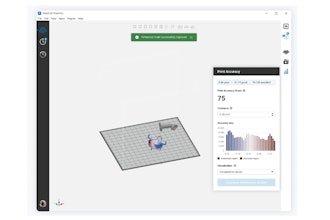
Since the discovery of its wreck site in 1985, the RMS Titanic has captured the imagination of people around the world.
Now, RMS Titanic, Inc., an affiliate of Experiential Media Group, LLC. and the salvor-in-possession of RMS Titanic and its wreck site, together with the Advanced Imaging and Visualization Lab (AIVL) at the Woods Hole Oceanographic Institution (WHOI) and Marine Imaging Technologies (Marine Imaging) will join forces to preserve the site for generations to come.
The group will apply advanced underwater imaging technology to monitor and document the wreck while shedding light on natural and human-caused changes to artifacts on the seafloor.
"The RMS Titanic site is one of the best documented deep-sea sites in the world and offers us greater understanding into the processes and ecosystems in the deep sea," said AIVL Director William Lange. "The value of having so many expeditions to the site over the past 34 years is that we will be able to support a better understanding of the biological and archeological processes that occur there over time."
The RMS Titanic Survey Data Scientific Study Center will focus on advanced and newly refined research methodologies, including underwater 3D imaging, that will lead to the clearest and most comprehensive data collected to date. In addition, the partners will work with maritime heritage archeologists on management strategies for preserving the wreck site and deliver new ways of viewing RMS Titanic through documentary and museum films, virtual reality (VR), simulator rides, and museum exhibitions.
"This new RMS Titanic leadership team offers a comprehensive approach to monitoring the ship while engaging the global community in our efforts," said Alexandra Klinghoffer, Vice President of Collections for Experiential Media Group. "Our objective is simple: to utilize the most up to date oceanographic and scientific data, for historical verification, scientific education and public awareness. This collaboration further solidifies these objectives while providing the most up to date records to protect the RMS Titanic wreck site. In addition, this data will help support a broader set of research initiatives related to the current state of deep-sea environments."
As part of the new center, AIVL and Marine Imaging are collaborating to create high-resolution (near-millimeter scale) 3D interactive models of the Titanic's bow, stern and other artifacts distributed across the site located more than 4,000 meters (13,000 feet) beneath the surface. To date, AIVL has compiled and processed survey data from RMS Titanic expeditions in 1985, 1986, 1991, 2005, and 2010. This information is helping to improve understanding of structural and environmental changes that have occurred at the wreck site since the ship sank. In addition, this expedition survey data, when combined with RMST's vast collection of imagery from multiple expeditions to the site, will provide a deeper understanding of the site at the time of discovery and add to forensic time-series studies.
"This is one of the first times that these new modeling techniques have been applied to a wreck site of this size and at such extreme depths," said Lange. "Using datasets from past expeditions, we hope to create an archeological site map of the RMS Titanic wreck site dating back to the time of discovery, before any human disturbance."
AIVL and Marine Imaging have already created the first 2D and 3D videos of the wreck site at resolutions greater than HD, including UDHDTV (4K) and 8K (IMAX), which can be made into 2D, 3D, panoramic, and VR production formats for future release to the public.
The new methods will also offer new ways to study objects and features underwater in ways that traditional underwater imaging techniques cannot. The 3D interactive models that result will be used by archeologists to precisely monitor changes to the wreckage and to provide input for long-term management of the site.
"This scientific collaboration not only signifies the next chapter in RMS Titanic's story but continues our renewed commitment to provide the most technologically advanced and comprehensive research of the wreck site," said Dr. David Gallo, Director of Special Projects at Experiential Media Group. "Years of thorough study, dedication, and thoughtful collaborations have allowed us to make clear and careful steps towards protecting RMS Titanic for future generations."






















